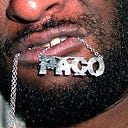Member-only story
HIDDEN HISTORY
Remembering When Mary Was Black
Thoughts on the Black Madonna iconography of medieval Europe.

Non-Medium subscribers can read this by clicking here.
“Why are the majority of the virgins that are revered in the celebrated pilgrimages black?” queried writer Romain Rolland, puzzling over the curious existence of religious icons known as the Black Madonna found in hundreds of Christian churches throughout Europe:
“At Boulogne-sur-mer (France) the sailors carry a Black Virgin in the procession. At Clermont in Auvergne (France), the Black Virgin is revered as also at Einsiedeln, Switzerland, near Zurich, to which thousands of pilgrims — Swiss, Bavarians, Alstatian — go to pay her homage. The famous Virgin of Oropa in the Piedmont (Italy) is still a Negress, as well as the not less legendary one of Montserat in Catalonia (Spain), which receives 60,000 visitors a year. I have been able to trace the history of this one to the year 718 AD and it was always black. It is highly interesting to know, therefore, if the mother of Christ was not a Negro woman, how it happens that she is black in France, Switzerland, Italy and Spain?”
“How?” indeed.
